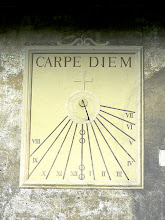
PHOTO: Fractional Reserve Banking
------ make Cats Sad,...
for Cats and sound people prefer
***** Full Reserve Banking *****
________________________________
WHAT EXACTLY IS FULL RESERVE BANKING ?
======================================
Thu, 21st Jul 2011,
by Michael Reiss (guest author)
The definition of full reserve banking can be a source of much confusion and consternation.
The confusion revolves around the definition of “reserve ratio”.
Normally, the reserve ratio is defined approximately as follows:
Reserve ratio = The money held by the bank
---------------------------------------------
The money deposited in the bank by its customers
It is easy to see that the higher the reserve ratio, the smaller the risk of a bank run.
With a ratio of 100% this means that even if every single customer demanded to take out their money, the bank will have it all available.
This is clearly a very safe form of banking, but as described so far, the bank would simply be acting like a safe deposit box.
It would not be able to make any loans.
It appears that banks can not act as financial intermediaries between savers and borrowers.
Indeed there are some economists that have pronounced that Full Reserve Banking is useless for precisely this reason… but they are mistaken and here’s why:
In the context of a full reserve banking system, we need to be slightly more precise about the meaning of the reserve ratio.
Reserve ratio = The money held by the bank
------------------------------------------
The money that the customers currently have
the legal right to withdraw.
Expressed like this, a mechanism for banks to make loans becomes available.
The mechanism is via the use of time deposits.
A time deposit is where a customer makes a deposit with an agreement not to take that money out again until some kind of term or notice period is served.
During the term of the time deposit, the customer has no legal right to take it out. Now the banks can lend out that money whilst still maintaining a 100% reserve ratio.
Now you can see that in a full reserve system, banks can act as intermediaries between savers and borrowers.
This fact has been accepted by some very famous economists indeed, including Irving Fisher and Milton Friedman.
What would happen in practice is that two types of account would be needed: Demand deposit accounts for day to day transactions, and savings accounts (involving time deposits) for long term savings. Banks would not be able to lend out any of the money from the demand deposit accounts, indeed the banks may charge fees for their trouble in keeping the money safe and processing transfers. The banks would however, be able to lend out money stored in savings accounts.
A full reserve system is in fact very natural.
It works just as people would expect money to work if there were no banks and no cheques.
In such a system, if Henry lends $500 to Bob for three months, then Henry would not expect to be able to spend his $500 until after three months had gone by and Bob has paid the money back.
It is the fractional reserve system that is unnatural.
With fractional reserves, Henry can still spend his $500(using cheques) despite the fact that the bank holding his deposit account may have lent most of the $500 to Bob! Now that’s crazy!
There are many details that need to be added to the definition given here, before you have a complete monetary and banking system.
For example, some people suggest that an institution that deals in time deposits can not be called a “bank” and instead must be called a kind of “mutual fund”.
In my personal opinion this is an arbitrary distinction and is simply a matter of definition.
There are also many subtle details about the rules and regulations surrounding time deposits, their durations, “maturity matching” etc.
Then there are arguments about whether you need mechanisms to discourage hoarding – for example demurrage or deliberate inflation via government money printing.
Then there is the issue of whether or not there are any government guarantees protecting depositors in case a bank goes under.
Because of all these yet-to-be-decided things which are not included within the definition, there is more than one system that could be called “full reserve banking”.
This is why there have been so many different proposals put forth over the years.
It would be a mistake to think that any one proposal is the definitive one.
Some proposals will undoubtedly be better or more practical than others.
================================
---


0 Comments:
Post a Comment
<< Home